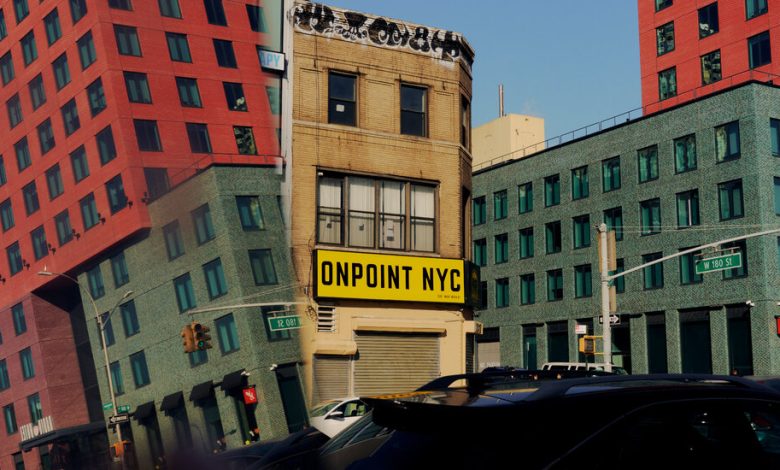A Safe Injection Site Won’t Destroy Your Neighborhood. It May Save It.

Over 100,000 Americans now die from drug overdoses annually. To combat this crisis in New York City and save lives, Mayor Bill de Blasio decided to support an initiative rife with controversy: In November 2021, his government allowed OnPoint, a nonprofit, to open two overdose prevention centers, where people with addictions can inject or smoke drugs like opioids and stimulants under medical supervision to reduce the risk of overdose death. Upon taking office, Mayor Eric Adams, Mr. de Blasio’s successor, has continued to support the sites’ work.
Some neighbors, politicians and media have claimed that the centers — one in East Harlem and one in Washington Heights — are increasing crime and public drug use in neighborhoods already burdened with poverty.
But an important new study published this week refutes these claims. It shows that violent and property crime rates near the two overdose prevention centers (sometimes referred to as safe injection or safe consumption sites) did not increase any more than crime in similar neighborhoods elsewhere in the city. This was in spite of the fact that the police conducted 83 percent fewer drug arrests near the sites (likely to avoid deterring people with addiction from using them) compared with other harm reduction sites that did not offer safe injection.
“We did not observe any increase in crime or disorder or any of the things that people worry about when they see an overdose prevention site opening,” said a study co-author, Brandon Del Pozo, an assistant professor of medicine at Brown University and a former New York Police Department precinct commander and police chief of Burlington, Vt.
Previous research has consistently shown that harm reduction approaches that prioritize public health over drug-law enforcement do not worsen neighborhoods or increase crime rates. And most of all, these policies don’t lead to higher drug use among youth or people who are already addicted, and can increase the likelihood that they enter treatment. At least 200 such centers now exist in over a dozen countries around the world, with millions of injections recorded for several decades and not a single reported death inside a facility. The New York sites have been utilized over 90,000 times by around 4,000 people, with 1,100 overdoses reversed and no deaths.
Yet such policies are still met with heavy resistance from politicians around the country. Gov. Kathy Hochul of New York recently refused to use money from the opioid litigation settlements to fund overdose prevention sites, despite the recommendations of a state board to do so.
The new data, published in JAMA Network Open, should ease fears surrounding overdose prevention centers and related policies like drug decriminalization and the provision of clean needles and overdose antidotes — all of which treat addiction as a health issue, not a crime. Politicians need to stop buying into misinformation that is being used to spur a backlash against harm reduction and instead use data to guide policy.
Harm reduction cannot solve all drug-related problems — it’s called harm reduction, not harm elimination because it recognizes that humans will always engage in some degree of risky behavior. Supervised consumption sites also do not provide safer substances, which means they don’t address dealing or unregulated and impure concoctions sold illegally. And they obviously cannot end homelessness, which is the real reason for most public drug use and its consequences (such as used needle litter). What they do offer is a respite and a chance to connect to services that are safer, more effective and cheaper than using law enforcement.
Dr. Nora Volkow, director of the National Institute on Drug Abuse, the federal agency that funded the study, acknowledged critics’ fears that this approach could bring more disorder. But the research, she said, is evidence to the contrary: It doesn’t. Although the American data is preliminary since it comes from a single study, “what it does show is that having these safe injection sites is not associated with an increase in violence,” Dr. Volkow said.
The research also suggests that 911 calls related to medical emergencies fell markedly near the overdose prevention centers but hardly changed elsewhere, suggesting that the sites were possibly preventing medical overdose calls. And 311 calls related to homelessness decreased, while calls about public drug use and unsanitary conditions did not show a statistically significant increase.
Sam Rivera, the executive director of OnPoint, said he was not surprised by the findings, given his good relationships with the police and with neighbors, like the school directly across the street from the Harlem site. “It’s great to have it documented,” he said, “What we hear from some people who are local is that the impact has been pretty amazing.”
Mr. Rivera mentioned that on his way to work, he’d sometimes seen police officers accompanying program participants. He would jump off his motorcycle, worried about imminent arrests. The officers, however, “told me they were walking them to my organization,” he said, noting that the police also refer others who use drugs who haven’t visited. This suggests that the officers recognize the value of the overdose prevention centers, as either a way to reduce public drug use or to enable people to get services.
One of the biggest misunderstandings about harm reduction centers is that their nonjudgmental approach encourages increased drug use and delays abstinence or any type of recovery. At OnPoint, people bring their own illegal drugs to use under supervision. But even studies where heroin itself is provided by prescription do not find escalations in use.
Switzerland, for example, opened its first overdose prevention site in 1986. Recognizing that having people remain reliant on getting their drugs illegally was not optimal, it began piloting heroin prescriptions in 1992. Between the early 1990s and the mid-to-late- 2000s, overdose death rates were cut in half and the number of people starting heroin use fell 80 percent, with public injections almost entirely eliminated. Overdose rates have stayed far below the 1990s peak since then.
Meanwhile, the more time patients spent receiving prescribed heroin, the more likely it was that they switched to abstinence or more traditional medication treatment, which means that rather than “enabling” longer periods of addiction, providing safer drugs and medically supervised places to use them both extends lives and encourages abstinence.
When skeptics imagine overdose prevention sites like OnPoint’s, they seem to picture the equivalent of keg parties or drug orgies, with people who inject drugs being egged on to “shoot, shoot, shoot” as if they were chugging alcohol.
In reality, the centers are calm and homey, welcoming people who are typically unwelcome elsewhere. And this environment is critical to fostering more effective recovery from addiction. “You are worthless unless you quit,” is the message people with addiction are given every day, nearly everywhere they go. Many are suspicious of treatment because of bad or even traumatic experiences with medical providers and prior attempts at rehab. They don’t trust that being told “you need treatment” means anything other than rejection and humiliating, potentially futile therapy.
In contrast, accepting people as they are builds connection and helps them to feel valued, which is a far more potent way to spur recovery. “Kindness is a very powerful reinforcer,” said Dr. Volkow, referring to a positive factor that can motivate learning and change. “You can get so much more by being kind with people than by being punitive,” she said, adding that the stress of isolation, incarceration and ostracism is more likely to drive bingeing, not quitting, because drug-taking is often driven by a need to feel socially connected.
When people begin to see themselves as worthy of care — and to trust that those who are recommending further help will refer them to compassionate professionals — they are more likely to start and stick with a recovery process.
Mr. Rivera, who is of African and Native Caribbean Taino descent, spoke recently about his own journey in harm reduction. Earlier in his life, he said, he approached everything as a fight. But, in his dreams and during fire ceremonies, he said his ancestors began telling him that he was a “bad warrior.” Good warriors, they told him, fight only after peaceful methods have failed. And that’s the core of harm reduction. “When you look through a lens of love and compassion, you’re going to see people differently, you’re going to respond to them differently,” he said.
And that changes everything, fostering relationships that heal in a way that force and coercion can’t. It’s a lesson we need to heed both in ending the drug war — and others.
Maia Szalavitz (@maiasz) is a contributing Opinion writer and the author, most recently, of “Undoing Drugs: How Harm Reduction Is Changing the Future of Drugs and Addiction.”
The Times is committed to publishing a diversity of letters to the editor. We’d like to hear what you think about this or any of our articles. Here are some tips. And here’s our email: [email protected].
Follow The New York Times Opinion section on Facebook, Twitter (@NYTopinion) and Instagram.




